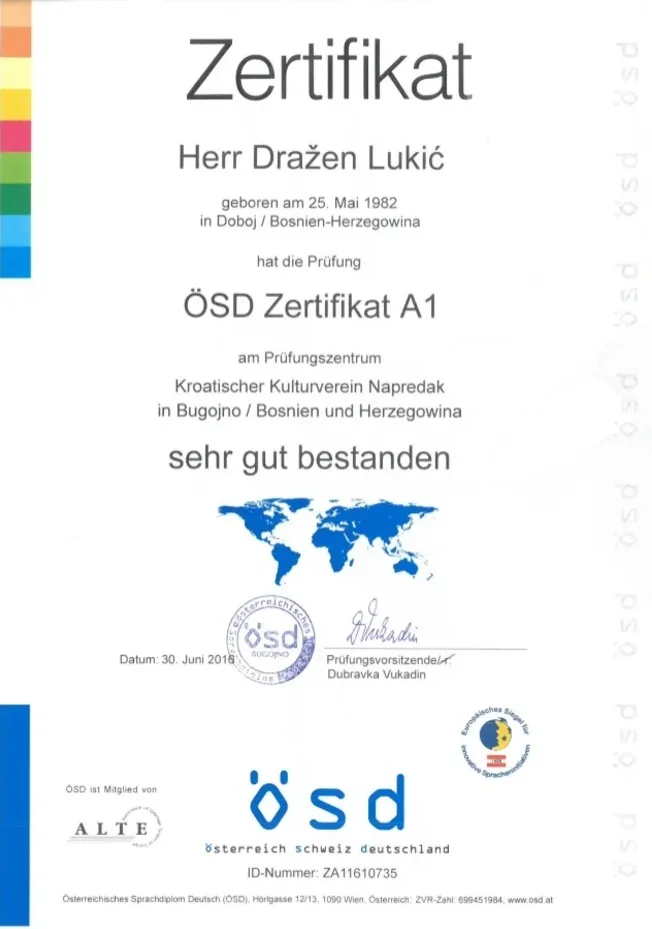Comprehending the ÖSD B2 Certification: A Comprehensive Guide for German Learners
In the landscape of language credentials, the ÖSD B2 certification stands out as a significant milestone for students of the German language. Attaining proficiency at this level opens various avenues, both academically and professionally, while likewise enriching cultural understanding and individual development. This article aims to offer an informative summary of the ÖSD B2 certification, detailing its significance, structure, preparation strategies, and frequently asked concerns.
What is the ÖSD B2 Certification?
The ÖSD (Österreichisches Sprachdiplom Deutsch) B2 accreditation is a main language credentials that evaluates intermediate proficiency in the German language. It is particularly acknowledged in Austria, Germany, and Switzerland, making it a valuable asset for those planning to study or work in these nations.
At the B2 level, learners are expected to:
Understand the essences of complex texts on both concrete and abstract topics.
Connect with fluency and spontaneity with native speakers.
Produce clear, in-depth texts on a vast array of topics related to their interests.
Why is the ÖSD B2 Certification Important?
Academic Opportunities: Many universities in German-speaking countries require a minimum of B2-level proficiency for admissions, particularly for courses taught in German.
Expert Advantages: Employers typically look for candidates with recognized language certifications, and B2 proficiency shows the ability to interact efficiently in expert settings.
Cultural Integration: Achieving this level can deepen one's understanding of German culture, society, and subtleties of everyday language.
Structure of the ÖSD B2 Exam
The ÖSD B2 assessment comprises four main elements: Listening, Reading, Writing, and Speaking. Each area examines different proficiencies within the language ability.
1. Listening Comprehension
In this section, test-takers listen to various audio clips such as conversations, news reports, and discussions. They are required to answer questions that determine their understanding of material, tone, and ramifications.
2. Checking out sprachzertifikat a1 consists of different written products like articles, ads, and e-mails. Prospects need to demonstrate their ability to understand the context and essential concepts, as well as analyze different kinds of texts.

3. Composing
Candidates are asked to compose a text based upon a specific subject, frequently needing structured arguments and coherent reasoning. This might consist of writing essays, reports, or official letters.
4. Speaking
The speaking evaluation generally includes 2 parts: a monologue and a discussion with an inspector. Test-takers need to communicate successfully, reveal opinions, and react to concerns clearly.
Scoring System
Each component is scored separately, and to pass, prospects usually should achieve an average rating across all sections. The grading requirements focus on language efficiency, coherence, fluency, and the ability to take part in discussion.
Preparation Strategies for ÖSD B2
Preparing for the ÖSD B2 exam can be a demanding yet rewarding undertaking. Here are some efficient methods that can enhance your preparation:
1. Familiarize Yourself with the Exam Format
Evaluation past exam documents to understand the kinds of concerns and jobs included.
Tape yourself during practice speaking sessions to enhance fluency and expression.
2. Develop Your Vocabulary
Develop vocabulary lists based on common themes for the B2 level, such as Work, Environment, and Health.
Use flashcards and language apps to reinforce knowing.
3. Practice Listening Skills
Listen to German podcasts, news stations, and audiobooks that include a range of subjects and accents.
Participate in regular conversation practice with native speakers, either face to face or online.
4. Take Mock Exams
Replicate exam conditions by taking practice tests within the allocated time limits.
Evaluate your efficiency to recognize locations for improvement.
5. Sign Up With Study Groups
Team up with fellow students to practice speaking and exchange resources.
Take part in discussions that challenge your understanding of complicated topics.
Typical Questions about ÖSD B2
FAQ
Q1: How long is the ÖSD B2 certification valid?
A1: The ÖSD B2 certificate does not end, but it is a good idea to keep your language abilities upgraded through continuous practice and use.
Q2: What resources are suggested for getting ready for the ÖSD B2 exam?
A2: Books specifically designed for B2 preparation, online courses, language exchange platforms, and official ÖSD practice products are suggested for effective research study.
Q3: Where can I take the ÖSD B2 exam?
A3: The ÖSD B2 exam can be taken at different language schools, universities, and ÖSD examination centers worldwide. It's suggested to look for arranged dates in your area.
Q4: What if I stop working the exam?
A4: Candidates can retake the ÖSD B2 exam as numerous times as required to attain the desired result. However, it's often beneficial to take some time to improve language skills before reattempting.
Conclusion
The ÖSD B2 certification represents an important action in the journey of mastering the German language. By understanding the structure of the exam, using efficient preparation techniques, and making use of offered resources, students can enhance their efficiency and achieve their language objectives. Eventually, the advantages of achieving the B2 certificate extend beyond academic community and work, improving the cultural and social experiences of those who aim to learn German. Starting this journey is not just about passing an exam; it's about accepting a language that opens doors to new opportunities and experiences.
